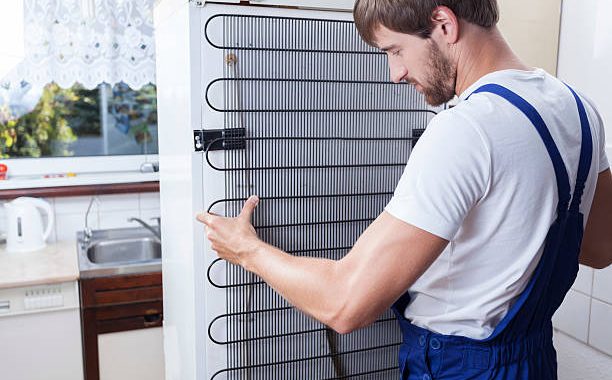Refrigerant leakage is a widespread malfunction from which both new and old refrigerator models are not insured. It is possible to restore the work of technics in house conditions, but only under the condition of the presence of the special equipment. Without the help of professional devices, it is almost impossible to define the source of a problem. If at all possible, order refrigerator repair from Chula Vista Appliance Repair Company to avoid aggravating the breakdown. Users not wishing to overpay for the services of a handyman are advised to try to repair the unit with their own hands. We will now explain in detail what you need to do.
Step 1 – Identification of signs of freon deficiency in the refrigerator
Refrigerant leakage is accompanied by characteristic symptoms, which greatly simplifies the process of diagnosis. However, you will need to buy or hire specialist equipment to identify the faulty unit.
Insufficient cooling
If the gas starts to escape, the temperature will rise immediately. If the refrigerator is equipped with two compressors, cooling problems will only occur in one of the chambers. In models with a single motor, insufficient cooling will occur in both the freezer compartment and the refrigerator compartment.
Compressor running without stopping
The motor is running continuously because a freon leak from the refrigerator causes the pressure in the entire system to drop. The compressor is running at full capacity to compensate for insufficient cooling. This leads to premature failure of the motor. Therefore, it is best not to delay repairs.
The chambers are not cooled and the compressor does not start.
The appliance functions on the basis of residual refrigerant. However, when the freon evaporates completely, the booths stop cooling and the motor shuts down.
An alarm goes off
Most models of refrigeration equipment support an alarm system. If the unit does not have a display, then a red light will flash. This indicator is signed “Alarm” or “Warning! If the display does exist, the corresponding error code will appear on it. The self-diagnosis will indicate that the chambers are too warm, but the errors will not indicate a specific lack of refrigerant.
Visual signs
These are indirect symptoms, but should not be ignored either. In some cases, a lack of freon in the chamber causes ice to begin to form around the evaporator. This indicates that it is the evaporator that is leaking. The appearance of rusty residues around the perimeter of the door is a sign of malfunction of the defrosting system. Deformation of one of the walls of the refrigerator may also indicate a leak. Look for the source of the problem in the area of the cavity wall, which has swollen.
Step 2 – Check vulnerable components for freon leakage
Diagnostics involves determining not only the type of fault but also identifying the source of the problem. Regardless of which manufacturer’s appliances you use, the list of the most vulnerable components remains the same
– Locking socket connection – the factory soldering fails over time, so leaks occur here. Deformation occurs due to factory defects or as a result of natural wear and tear;
– evaporator – mainly this part is made of aluminum, so it is prone to corrosion. Moisture accumulates in the system, causing micro-cracks to form. The refrigerant leaks through them;
– The steel circuit – this module is located on the perimeter of the freezer compartment. The unit contributes to the evaporation of condensate. The moist environment becomes a catalyst for corrosion. The metal rusts and leaks occur as a result. Problems with the steel circuit occur after 5 years of uninterrupted use.
You now know how to find a freon leak in your refrigerator. However, in some cases, it is better to contact Chula Vista Appliance Repair Company right away. A prime example is a micro-crack in the evaporator. This hardware unit is located in the foamed part of the unit. Therefore, to gain access to the damaged part, practically all elements of the casing will have to be disassembled. This is an extremely time-consuming and labor-intensive process.
Contact us
(619) 880-5508


